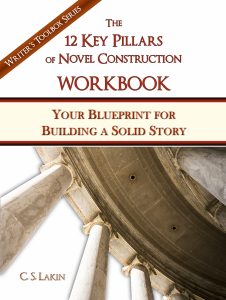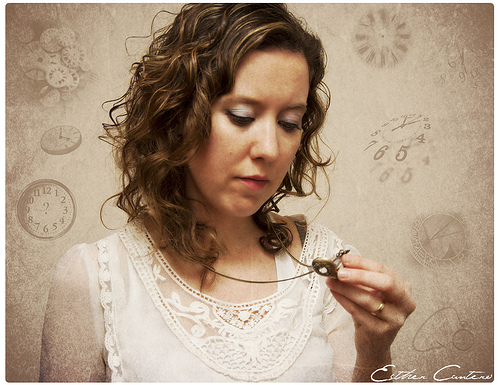Ways Novelists Can Break from the Structural Rules
We’ve been looking at the downside to the three-act structure these last two weeks, and I’ve shared my thoughts on this.
Really, stories are basically a beginning, a middle, and an ending, and some writing instructors base their passion for the three-act structure on this. Meaning, since stories have a beginning, middle, and end, that must imply there are three acts.
You can use Aristotle’s concept and translate your idea into three acts: What is the first act? How the story begins. What is the second act? The middle of the story (which includes the main crisis of the dominant plot). The third act is the climax of the story and the resolution. Okay, it’s simplistic, but that’s how many justify the use of the three-act structure.
Doesn’t make sense to me.
Well, if we aren’t going to look at stories as three-act constructs, what’s the alternative?
In my opinion, it makes much more sense when you’re creating a story to think in terms of the natural structure of a problem. You have two main parts: the action that created it and the action that will resolve it.
The action that creates the problem is called the inciting incident or initial disturbance (thank you, James Bell), and the action that resolves the problem is called the principle action. You have a threat, which is the driving force of the inciting action—a bad guy or bomb or zombie—and that’s the cause the problem. The anti-threat, which is the driving force of the principal action, is your protagonist or hero, the one who opposes the threat and solves the problem.
In Harry Potter, Voldemort is the threat that creates the problem. He is also the main source of the complications and crises, and the need for climactic actions to resolve the crises whenever Harry attempts to solve the problems Voldemort creates.
In The Silence of the Lambs, Buffalo Bill is the threat that causes the problem and also the main source of resistance when Jodie Foster’s character tries to track him down.
In The Lord of the Rings, Sauron is the threat that is causing the problem and is also the main source of resistance that creates the complications and crises when Frodo and his group try to solve the problem by destroying the ring of power.
After the story is created, of course, you can divide the action into any number of parts that you like, but it’s counterproductive to think in those terms at the story’s inception. In other words, you shouldn’t be using act structure to lay out or create the story.
How much better to focus on the natural structures surrounding the problem, which is the central event and heart of your story.
I shared with you in the last two posts some examples of how I broke up some of my novels into sections. Focus more on developing that premise—that situation that requires a responsive action.
Focus on Your Premise
You propose a situation, then something must be done to remedy it. That’s a premise. Once you have that, you can create a whole lot of complications as the protagonist tries to remedy the situation, leading up to the big climax in which the goal is reached and all is then resolved.
Then you’ll want to add to that. Which is where those famous (or infamous) plot points and pinch points come in. While I am aware those points help some writers lay out their story, it can also be too formulaic and restrictive in some novels to stick exactly to the recommended (some say “required”) placement of those points.
So I want to spend a little time talking about those terms and looking at their purpose. I think if you get the purpose behind them, they will make a whole lot more sense than if you’re told you need them and they have to go in such-and-such exact spot. Right?
A Look at the Midpoint
So let’s first examine the easiest benchmark moment in a novel—the midpoint. I bet you can guess where this key plot development is supposed to occur in your story.
The midpoint is supposed to take place halfway through the second act. But since we’re not breaking things up into three acts here, let’s just say it happens right about the middle of your novel. That seems a whole lot simpler to me.
So what’s the midpoint’s objective? Basically it’s the moment in which something new occurs. Some new major development or complication. Some twist or disruption.
Sometimes it’s the spiritual or emotional place the protagonist comes to, after a series of difficult setbacks or obstacles, where he’s pushed to make a hard decision, go through another “door of no return,” solidify his resolve, and move into further action. It’s a turning point that usually ramps the story up into a higher gear.
Midpoints can also be reversals. Something unexpected happens and changes the worldview of the protagonist. His plan no longer works and things have to change.
A good midpoint reversal will also raise the stakes, even if they were already high. It often elevates the personal stakes in a way that wasn’t there before or reveals a secret. Sometimes it requires a sacrifice—perhaps of a personal belief or an ally. It may involve all these things.
If you have developed a great premise (that concept with a kicker I so strongly preach about), and you brainstorm to come up with a killer midpoint situation, that can anchor down your framework.
Get Your Essentials in Place
If you have your basics: your inciting incident, your protagonist’s goal for the book, what is going to happen in the climax and end of the story (how the goal is reached or not, and what those consequences will be), then focusing on your midpoint can be a great way to zoom in on the heart of your story and character.
 Try writing down these basic benchmarks (use my 12 Key Pillars Workbook for an easy, helpful way to do this!) and play around with both the plot and emotional midpoint elements your story can best use. Think of some big shift for the midpoint. Something that upends the cart.
Try writing down these basic benchmarks (use my 12 Key Pillars Workbook for an easy, helpful way to do this!) and play around with both the plot and emotional midpoint elements your story can best use. Think of some big shift for the midpoint. Something that upends the cart.
In my fantasy novel The Unraveling of Wentwater mentioned last week, the midpoint event shows Teralyn learning the truth about her past—a shocking truth that upends her world and everything she believes and sends her fleeing. The stakes are raised super high as she runs headlong into danger because of what she’s learned:
As she turned to go, [Antius] laid a hand on her arm. “It may not be wise, Teralyn dear, or safe, to inquire in Wentwater. If the villagers think you are the one foretold to destroy the village—”
Tears splashed hot on his wrist. The storm cloud covering her face burst into a downpour. “All these years, I thought Kileen was my mother And now . . . my real mother is somewhere, who knows where, mourning me, thinking I’ve been dead . . . “
“Tera—”
Before Antius could dislodge the lump in his throat, she pulled from his grasp and ran down the granite pathway, lost to him before she was even gone from his sight.
In my women’s fiction mystery, Conundrum, Lisa is searching for clues as to how and why her father died so mysteriously twenty-five years earlier. But her research detonates a family conflagration that sets her mother at war with her. Her search for truth exposes deep, dark lies and secrets that threaten to destroy her marriage and her sanity.
The midpoint finds Lisa learning her mother has taken steps to throw her out of her house and off her precious ranch (which her mother owns). Her husband, Jeremy, in fury storms out of the house. Lisa, reeling in shock, then gets a phone call at the end of the scene, sealing the midpoint’s destruction:
The voice cut through my speech. “Mrs. Bolton? I need to speak with you about your husband, Jeremy Bolton. Mrs. Bolton?”
I pulled the receiver away and shook my head as if I had water in my ear. I could hear the officer’s voice as I stared at the receiver in my hand. “Mrs. Bolton, are you there? Your husband’s been in an accident—”
Up to this scene, Lisa has let things develop without doing much other than reacting. But now she is determined. She will fight her mother with all she has to save her marriage and her husband. It’s war. Game on.
Welcome to the midpoint.
In case you’re wondering, I didn’t plan out these midpoint events in advance. I only know they’re there because I just picked up my paperback copies, looked at the number of pages in the novels, then turned to the exact middle.
Now Where Did I Put That Midpoint?
That was a nice surprise to learn which scenes lay at my midpoint. If you check your rough draft of your novel and can’t find anything of paramount importance that changes the game for your protagonist at the midpoint, figure out where you put it. Or if you are missing it. Then rethink accordingly.
That may require a bit of heavy restructuring, but that midpoint transition should be there somewhere . . . around the middle of your novel.
So what about your story? What kind of midpoint do you have? Is it strong enough? Could it be better? What can you come up with to fashion a killer midpoint for your story?
Next week we’ll look at a few more key moments in your novel structure. And, yes, I am leading up to all this for a reason—to introduce my 10-20-30 Scene Builder concept, which, to be honest, I’m tweaking and developing as I write these posts. But I have some idea where I’m going and hope to take you with me. Be sure to give me some feedback!
And I’m really excited to get into this because it will drag us into one of my favorite topics: subplots!
I want to give writers some helpful methods of navigating the nebulous waters of novel structure. Using my 12 Key Pillars book and workbook will give you all the help you need, but there is always room for more insights and more examples to help you in this process, right?












I’m going to be publishing my stories on serial format on my website. And I’m starting to learn that, with this particular format, there really is no structure. The 3-Act doesn’t really work on stories that don’t really have an end.
Evolet…
In stories with “no end,” I often see that third act as existing beyond the frame of the book, so it exists in the readers imagination. Does that count? I think so.